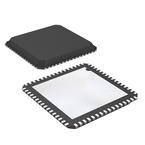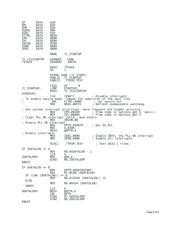herunterladen

Maxim > Design Support > Technical Documents > Application Notes > Energy Measurement & Metering > APP 5268
Keywords: power modes, transition, EMI, firmware update, power cycling, Teridian, energy meter
APPLICATION NOTE 5268
Firmware for Safe Power Mode Transitions
Dec 13, 2011
Abstract: This document describes two firmware improvements that were applied to the Demo Code
version 4.8p for Maxim's Teridian™ 71M6521 family of energy meter ICs. These improvements make
transitions between power modes on the 71M6521 more reliable and support proper correction of the
real-time clock (RTC) after return to mission mode. This document isolates the changes and describes
details so that the updates can be retrofitted into customer firmware, if needed.
Introduction
Trim Fuses
Trim fuses are a form of nonvolatile (NV) memory used in the production of Maxim's Teridian energy
metering ICs to adjust analog and digital characteristics of the ICs. After the production stage, the
contents of the trim fuses cannot be changed. Some examples are the fuses used to trim the V
REF
voltage to within ±1mV of 1.195 VDC and the fuses used to trim the V
BIAS
internal voltage to the target
value.
During operation of the IC, the contents of the trim fuses are read and refreshed by hardware on the IC
at regular intervals, and the values obtained by the trim fuse read are provided to both the hardware
controlled by the fuse values and to the fuse register locations in I/O RAM (see Figure 1). In the
71M6521 family, a total of seven individual trim fuse values can be read by first writing any number from
1 to 7 to I/O RAM register 0x20FD (TRIMSEL) and then reading the corresponding fuse value from I/O
RAM register 0x20FF (TRIM).
Figure 1. Trim fuse mechanism.
Page 1 of 9








